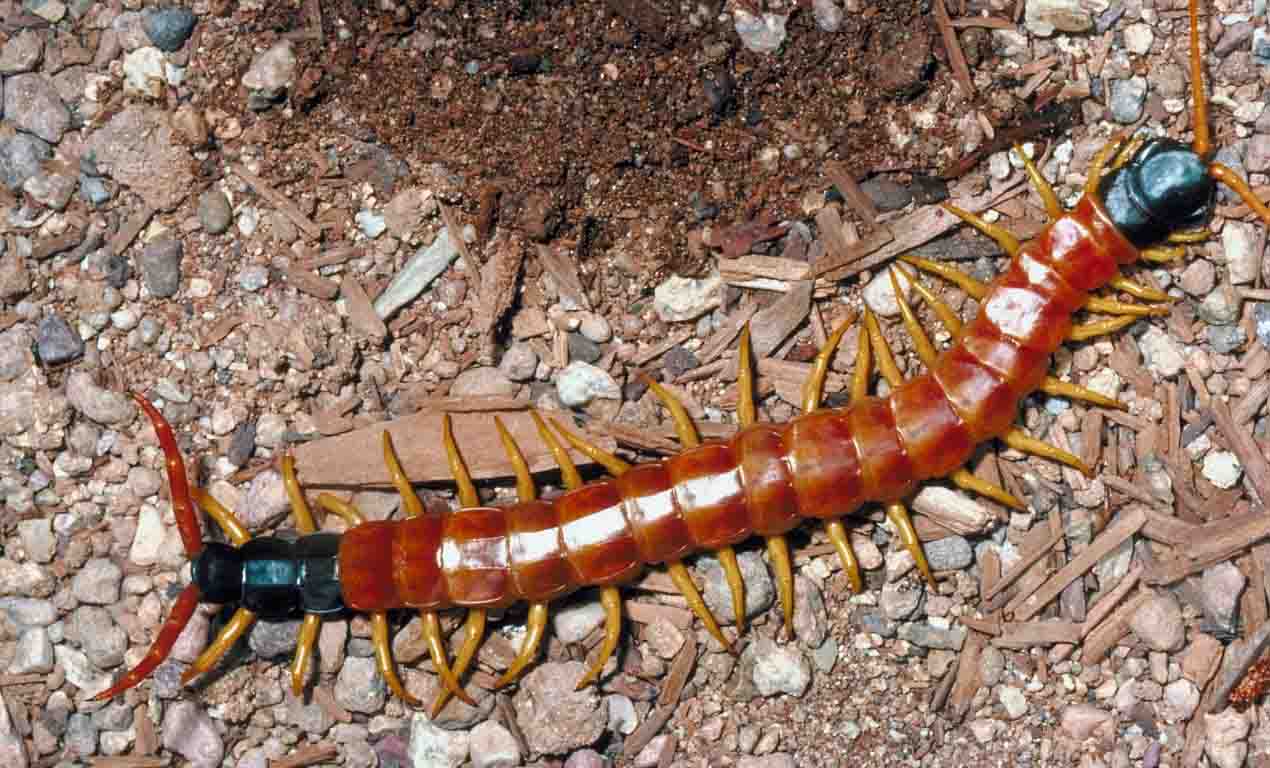

My identification is further supported by the fact that the house centipede is a very common creature, being found in almost all 50 states from Maine to California. But the hairiness is really just the spindly legs-or that’s my story, and I’m sticking with it.Īnd finally, the reason it is “centipede-like” is that it is, well, a centipede. So when this beast is skittering across the floor, it creates the distinct impression of being fuzzy. The centipede has as many as 15 pairs of incredibly long legs (each leg is nearly as long as the whole body) that appear to surround the body. How can I cram the quality of fuzziness into the glabrous house centipede? Easy.
Centipede and millipede pictures and facts series#
If you don’t know these two classic actors, then imagine Patrick Stewart-the guy who played Captain Jean-Luc Picard on that pale imitation of the great Star Trek series that I knew as a kid. In fact they’re as bald as Yul Brenner or Telly Savalas, which pretty much dates me. The real problem, or so it would seem, is “fuzzy-looking”.

I figure that one person’s brownish is another person’s reddish, so I’m sticking with my identification. The centipedes I’ve encountered in the garden are often reddish. But brown-yellow isn’t all that far off from “reddish”-and the things move fast so maybe their color was a bit hard to discern. Most descriptions of the house centipede refer to the little fellow as black, brown, yellow, or ivory. 2.0, via flickr.Īs for “reddish”, well that’s a bit of a problem. Image Credit: ‘Soil Centipede’, Photo by Matt Reinbold, CC by S.A.

So a house centipede would absolutely smoke Usain Bolt in a race if they were the same size (and if we set aside all of those niggling details about biomechanics of small and large organisms). Usain Bolt (who’s way faster than I am) ran 100 meters in 9.58 seconds which works out to about 23 miles per hour. That would be 3,600 feet per minute, or 216,000 feet per hour-or 41 miles per hour. Figure that a human is 6 feet (that’s my height and I’m a human), so 10 body lengths per second would mean that I’d be running 60 feet per second. Given that the creature is between 1 and 2 inches, that speed works out to traveling about 10 body lengths per second. “Super-fast” sure fits the house centipede. Let’s consider your description one term at a time. But never one to shy away from creative and somewhat informed speculation, I’m going to bet that your “super-fast, reddish, fuzzy-looking, centipede-like thing” was - drum roll… - a centipede! In fact, your description aligns quite well with the ubiquitous house centipede, Scutigera coleoptrata. Helpful clues include things like: where you live, where you saw it, when you saw it, how big it was, and how many there were. It would sure help hapless entomologists if people would provide just a teensy bit more information when asking, “What is it?” sorts of questions. What are those super-fast, reddish, fuzzy-looking, centipede-like things? Send your question to him care of and he’ll do his best to find you the answer. Bugs are everywhere, but how much do we really know about them? Jeff Lockwood to the rescue! Professor Lockwood is answering all your bug questions–one at a time, that is. Entomologists estimate there to be around a quintillion individual insects on the planet–and that’s just insects.


 0 kommentar(er)
0 kommentar(er)
